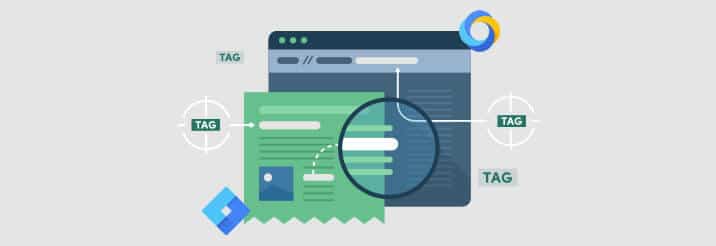As marketing and business development folks, we all tend to be familiar with website tools like Google Analytics and tracking software, but may not be familiar with actually adding tracking codes or managing tags on the backend of a B2B website.
However, you are likely tasked with tracking the effectiveness of digital campaigns across various channels to demonstrate the ROI to people at your company. For many marketing professionals, this means relying on an internal IT team to update the code on the website. If the code isn’t added correctly, the site could break. Even if the site continues to function, the code may not track correctly.
The good news is that the experts over at Google have caught on and are trying to make things easier for marketing professionals. Hence the introduction of Google Tag Manager.
First, what is Google Tag Manager?
Here is how Google defines it:
“Google Tag Manager is a tag management system that allows you to quickly and easily update tags and code snippets on your website or mobile app, such as those intended for traffic analysis and marketing optimization. You can add and update AdWords, Google Analytics, Firebase Analytics, Floodlight, and 3rd party or custom tags from the Tag Manager user interface instead of editing site code. This reduces errors and frees you from having to involve a developer when configuring tags.”
Second, what is a tag?
A tag is a small piece of code that shares information with a third party, such as a retargeting platform, advertising network, or social media platform. These tags all need to be added to the backend of a B2B website or mobile app to properly capture and track data. (Hence the need to get your IT department involved.)
Now that we’ve covered the fundamentals, why should you incorporate Google Tag Manager (GTM) into your B2B marketing?
Makes Adding Tracking Codes a Snap
In most companies, the IT department has different goals than the marketing department. IT staff is charged with making sure everything is working properly. For this reason, they may not be able to prioritize adding the new tracking code from Facebook so you can track your ad conversions. With Google Tag Manager, you don’t need to rely on the IT department or a developer to add new code. It’s designed for non-technical people and the interface is simple to use. All you do is log in to your Google Tag Manager account and add the new code. It can be done in less than 5 minutes.
Provides Flexibility and Control
We live in an age of ultimate customization. You’ve carefully crafted a B2B website design to support your marketing objectives. As such, you likely are carefully crafting your digital marketing campaigns to reach those objectives. Another great benefit of Google Tag Manager is that it allows you to use triggers and variables to control when your tags fire. This can be particularly helpful when you only want to collect data from certain actions taken on a website or when users visit specific pages. Having an additional level of flexibility and control means that the data you collect will meet your reporting needs.
Streamlines a Staging/Development Environment
Things don’t always work out how we plan, particularly on B2B website designs. Creating a staging or development environment for a website is a best practice to ensure testing can be done behind the scenes and won’t detract from a prospect or client’s experience with your website. However, you probably don’t want all your various tracking codes running on your test site since that will skew the metrics. Google Tag Manager makes it easy to set up your tracking codes to work only on your live site, thereby, preserving the integrity of your data. You can test away without crushing your actual data.
Conclusion: Use It!
Look, we don’t have shares in Google or Google Tag Manager. However, we do have a vested interest in using tools that streamline processes, save time, and preserve data integrity. For this reason, we think Google Tag Manager is a great addition to your B2B marketing toolbox.



